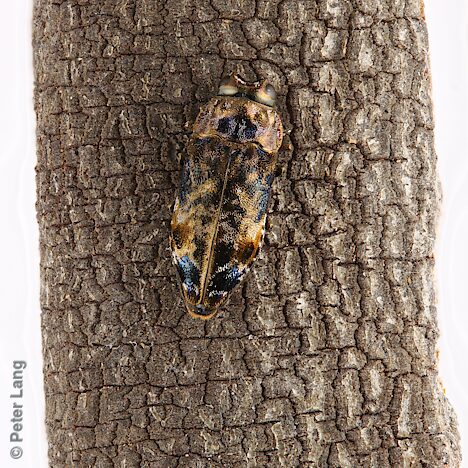
, reared from pupa, SL, A2.2_x468.jpg)
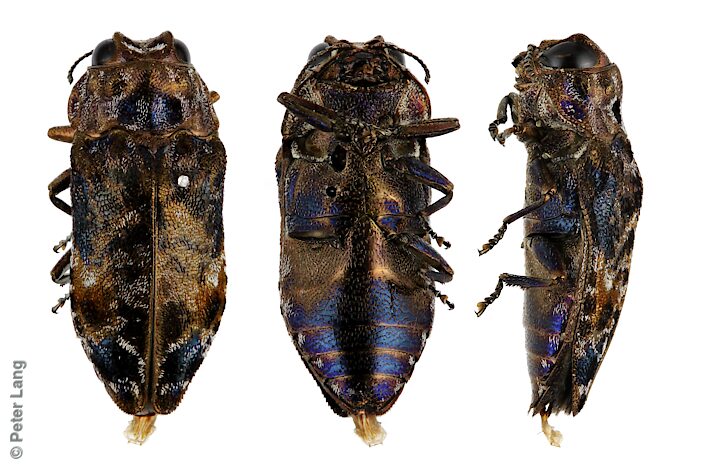
, A5_x300.jpg)
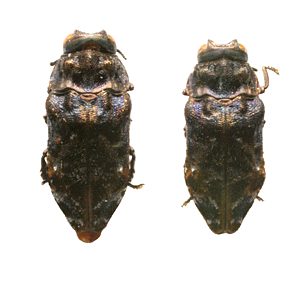
size¹:
×
2.9 mm

, reared from pupa, SL, A2.2_x468.jpg)

, A5_x300.jpg)

| male | female | |||||
|---|---|---|---|---|---|---|
| L1 | 6.2 | n = 1 | 7.1 | 6.75 – 7.75 | n = 3 | |
| L2 | 6.0 | n = 1 | 7.0 | 6.65 – 7.55 | n = 3 | |
| W | 2.6 | n = 1 | 3.0 | 2.8 – 3.25 | n = 3 | |
| Legend | L1 | length from clypeus/frons to elytral apex (mean, range, sample size) |
| L2 | length from anterior of edge of eyes to elytral apex | |
| W | maximum width with elytra fully closed |
Head with frons strongly concave between heavy 'eyebrow-like' forward-projecting ridges that border the inner edge of the eyes; pronotum and elytral surface very uneven; colouration dark grey-brown with areas of blue reflections.
Despite its wide distribution spanning southern Australia and its common mistletoe hosts, it appears that until 2021 this species had not been collected in SA since it was first described by Carter 1923a around 100 years ago. Carter cited two localities: Lucindale in the SE Region of SA, and Geraldton in WA; the former is represented in the SA Museum by five syntype specimens.
In October 2021 I found degraded dead remains of two specimens in stems of a dead mistletoe near Milang on Fleurieu Peninsula. This prompted more systematic searching, and in the same month dead remains were discovered in the SE Region by A.M.P. Stolarski and I found a live pupa in the Adelaide foothills. Based on these and subsequent records, it is probably relatively common, at least in some of the more temperate parts of SA.
| Legend | P.J.Lang collection vouchered records | |
| other private collection or museum specimens, or sightings |
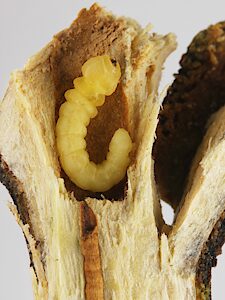
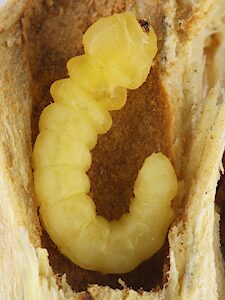
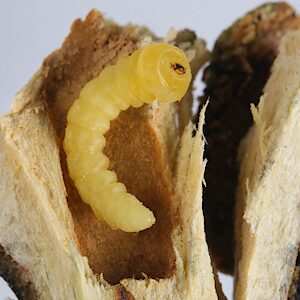
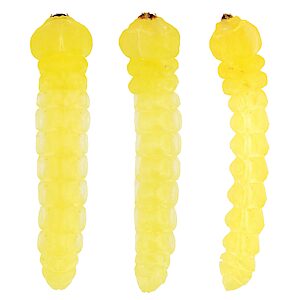
, SL, L5_x300.jpg)
, SL, L6_x300.jpg)
 stem, SL, P1.5_x300.jpg)
 stem, SL, P2.5_x300.jpg)
 stem, SL, P3.5_x300.jpg)
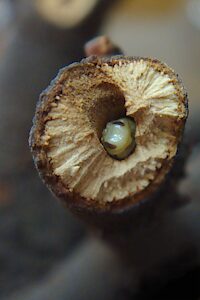
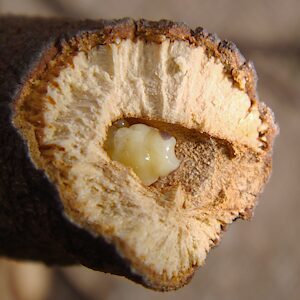
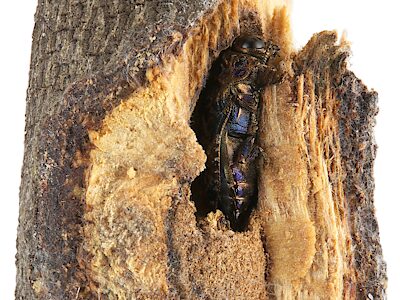
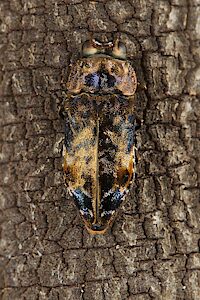
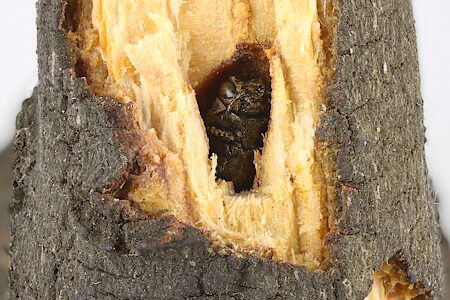
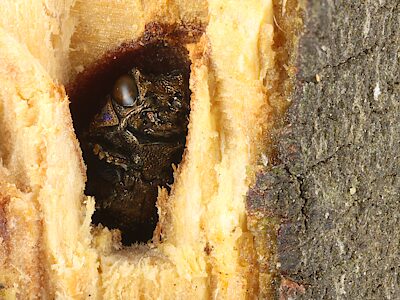
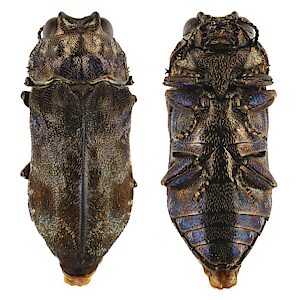
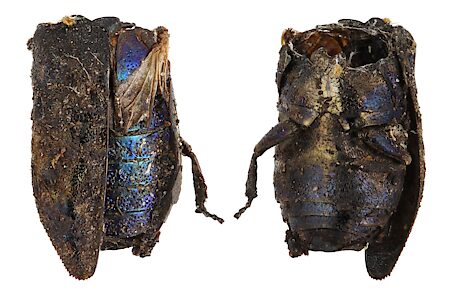
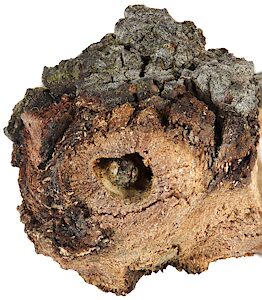
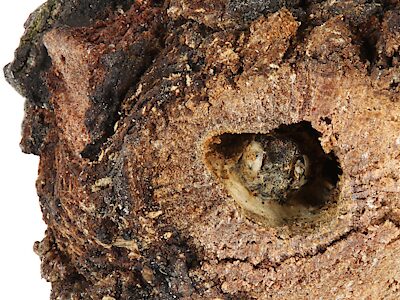
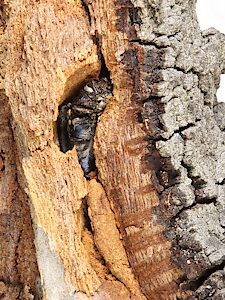
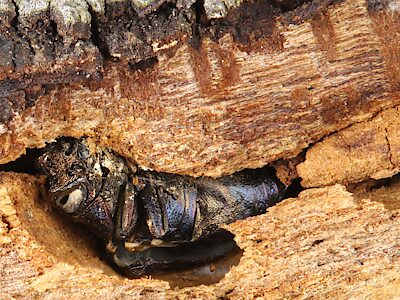
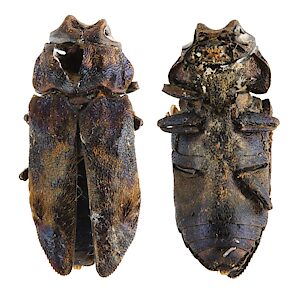
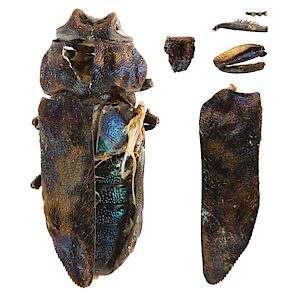
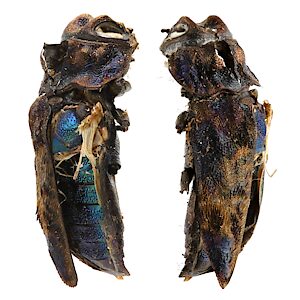
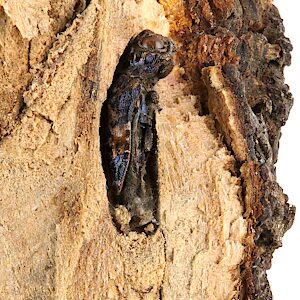
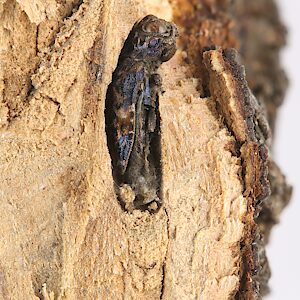
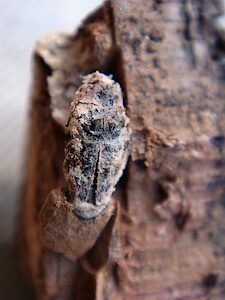
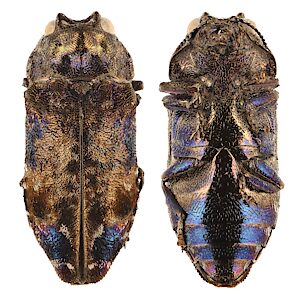
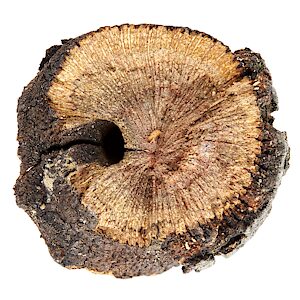
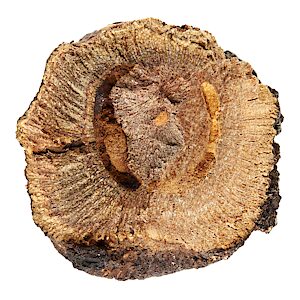
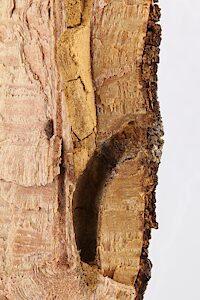
, SL, B4_x300.jpg)
| records | sites | SA regions¹ | family | adult live | adult dead | adult ex pupa | pupa | larva | |
| Amyema miquelii | 24 | 8 | MU, SL, SE | L | 1 | 10 | 2 | 3 | 8 |
| Legend | records | count of breeding adults, pupae and larvae |
| sites | count of major sites (unique 10 km grid cells +/- some distinct approximate localities) | |
| adult | live = extracted alive; dead = extracted dead as intact or fragmentary remains; ex billet = reared and emerged from stored sections of host; ex pupa = reared from sampled pupa | |
| pupa | extracted pupa; pupa ex larva = reared pupa from larva | |
| larva | extracted larva (any stage including prepupa) | |
| gall (only) | hatched or unhatched gall identified by form and position rather than contents | |
| Plant names in green are hyperlinked to a matching host species page with plant photos. | ||
| Code | records | % | host plant taxa | |
| L | Loranthaceae | 24 | 100% | 1 |
| position | records | sites | adult live | adult dead | adult ex pupa | pupa | larva | |
| stem base | 1 | 1 | 1 | |||||
| stem | 23 | 7 | 1 | 9 | 2 | 3 | 8 |
Strongly associated with mistletoes (Loranthaceae); Armstrong 1947 refers to adults being taken on two species of mistletoe in NSW (as 'Loranthus'), probably Amyema spp. Two more recent WA collections by R.P. McMillan in the SA Museum show that Amyema is a larval host. A pair was cut from 'from tunnels in Loranthus preissii' (now Amyema preissii) and a single individual was 'cut from Amyema'. The mistletoe A. preissii also occurs widely in SA and mainly parasitises Acacia species. The recent SA larval host records are from A. miquelii (Box Mistletoe), another common mistletoe which parasitizes a range of woodland Eucalypts in temperate areas, and a few mallee Eucalypt species also.
| ¹ Legend | regions | SA State Herbarium regions (map) EA: Eastern, EP: Eyre Peninsula, FR: Flinders Ranges, GT: Gairdner-Torrens, KI: Kangaroo Island, LE: Lake Eyre, MU: Murray, NL: Northern Lofty, NU: Nullarbor, NW: North-Western, SE: South-Eastern, SL: Southern Lofty, YP: Yorke Peninsula |
| size | The ellipse is the correct size when printed, indicative on a desktop screen, and likely to be wrong on a mobile device. |